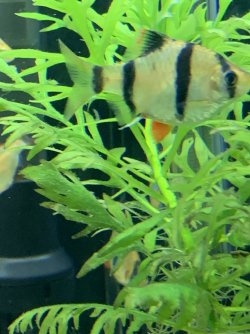Hi all. Started having fish death a couple of days ago. 240l, 24.5 degrees c, ph 6.8, planted tank. Ammonia 0, nitrite 0 nitrate 20
Lost a tiger barb looked emasticated when it died. 3 yo-yo loach now looking thin and on last legs. No obvious sign of disease or ich.
see yo-yo does look thin to you?
Do you think there is a worms infestation? If so recommended treatment?
some other fish do seemed to have stopped growing but dont look skinny as such. See image of these also.


Lost a tiger barb looked emasticated when it died. 3 yo-yo loach now looking thin and on last legs. No obvious sign of disease or ich.
see yo-yo does look thin to you?
Do you think there is a worms infestation? If so recommended treatment?
some other fish do seemed to have stopped growing but dont look skinny as such. See image of these also.




